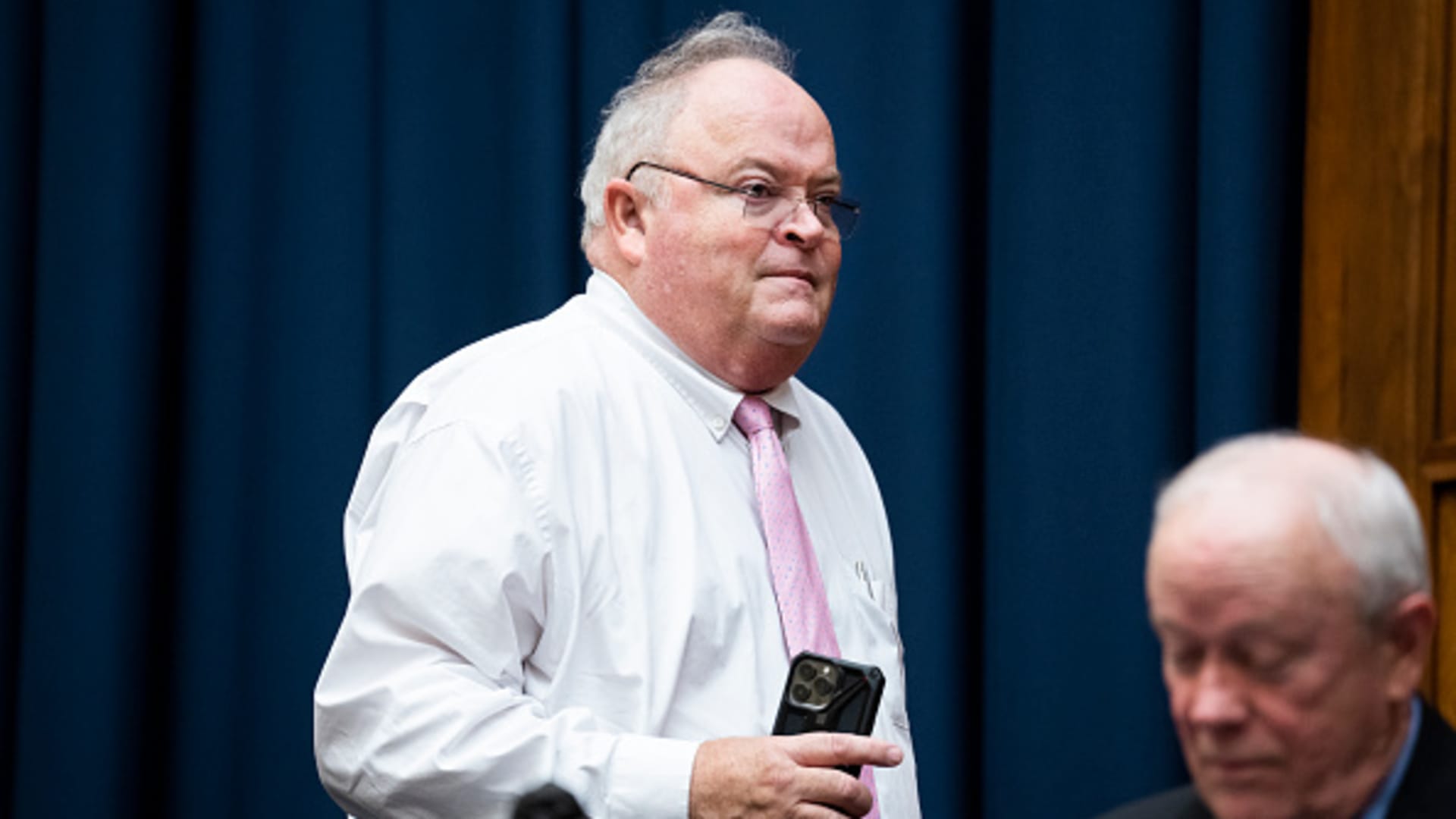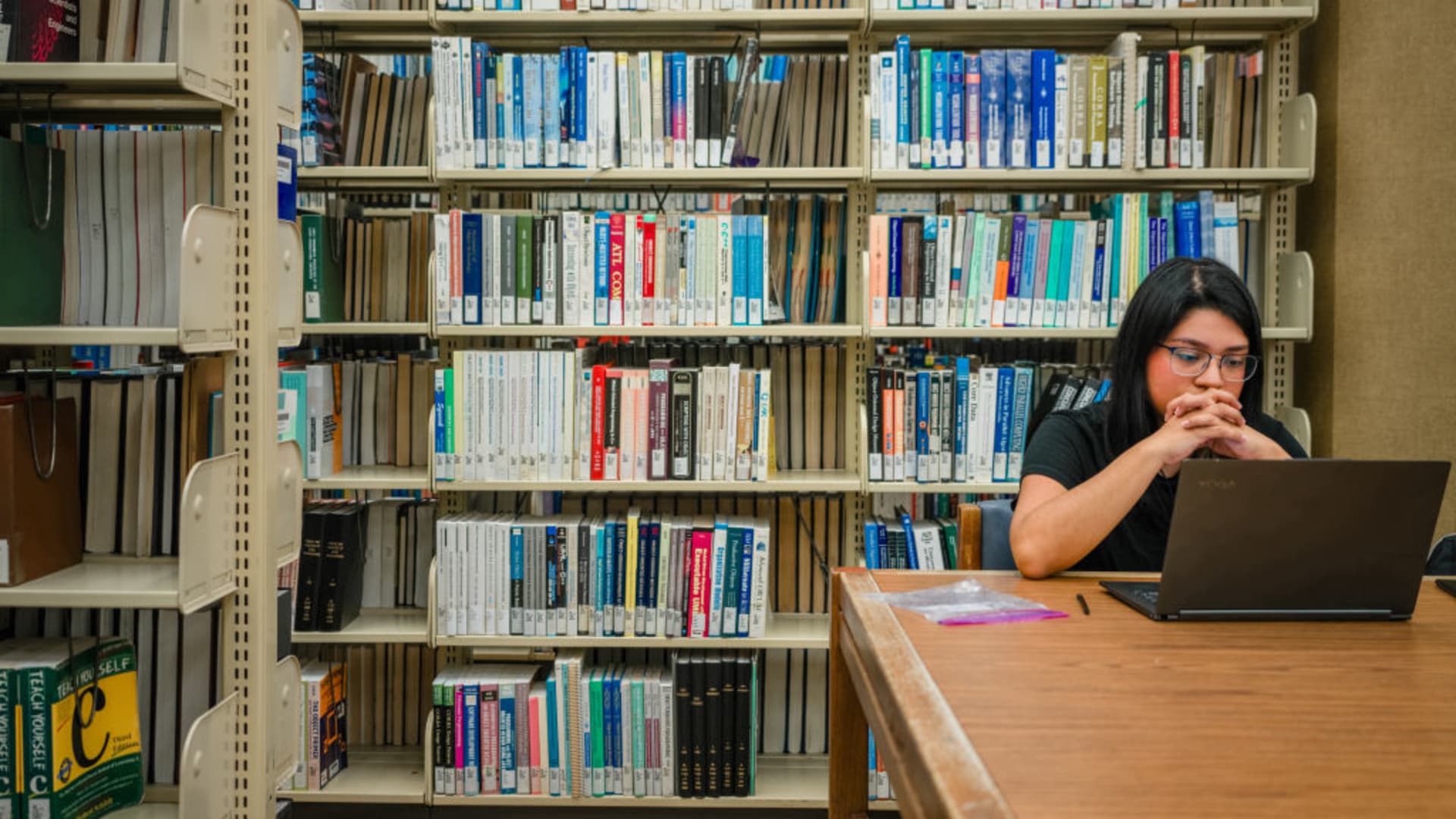Fewer high school students pursued a four-year degree this year, new research shows. That’s largely because of last year’s botched rollout of the Free Application for Federal Student Aid, experts say.
The number of 18-year-old college freshmen sank 5% this fall compared with last year, with four-year colleges notching the largest declines, according to a new analysis by the National Student Clearinghouse Research Center.
The declines in first-year student enrollment were most significant at four-year colleges that serve low-income students, the report also found. At four-year colleges where large shares of students receive Pell Grants, first-year student enrollment sank more than 10%.
More from Personal Finance:
The 2025-26 FAFSA is open ahead of schedule
These are the top 10 highest-paying college majors
More of the nation’s top colleges roll out no-loan policies
“It is startling to see such a substantial drop in freshmen, the first decline since the start of the pandemic in 2020 when they plunged nearly 10%,” Doug Shapiro, the National Student Clearinghouse Research Center’s executive director, said in a statement.
‘Aftermath of the FAFSA fiasco’
Experts had warned that problems with the new FAFSA would result in fewer students applying for financial aid and fewer students enrolling in college.
“Freshman enrollment dropped by a dramatic 5% this fall in the aftermath of the FAFSA fiasco, reversing previous gains,” said higher education expert Mark Kantrowitz.
Last year, 45% of college applicants reported frustrations with the process and 12% said they ultimately chose a community college, technical school or other alternative because of their FAFSA experience, according to Jenzabar/Spark451′s college-bound student survey. The higher education marketing firm polled more than 5,400 recent high school graduates in September.
Submitting a FAFSA is one of the best predictors of whether a high school senior will go on to college, according to the National College Attainment Network. Seniors who complete the FAFSA are 84% more likely to enroll in college directly after high school, according to an NCAN study of 2013 data.
“FAFSA completion and college enrollment move in the same direction — that relationship is pretty consistent,” said Bill DeBaun, NCAN’s senior director.
“We remain committed to helping students get the financial aid they need to pursue a college education and are thankful for the guidance counselors, financial aid professionals and the network of organizations and individuals who dedicated tremendous amounts of time, energy, and expertise to navigate this year’s college and financial aid application processes,” a spokesperson for the U.S. Department of Education said.
The Supreme Court‘s ruling against affirmative action was also “a likely contributing factor,” Kantrowitz said.
The affirmative action ban may have especially impacted the enrollment of underrepresented minority students at the most selective colleges, he said.
Although freshmen enrollment declined across all racial groups, at highly selective colleges the differences were striking: White enrollment fell by 5% and Black enrollment plummeted 16.9%, the National Student Clearinghouse Research Center found.
Some of these students may have enrolled in Historically Black Colleges and Universities or minority serving institutions, Kantrowitz said, “others may have shifted enrollment to community colleges, which are lower cost, due to delays in receiving financial aid offers.”
‘This is not a blip’
Because the FAFSA serves as the gateway to all federal money, including loans, work-study and grants, FAFSA completion rates are also an indicator of students’ intent to re-enroll, particularly among low-income undergraduates, according to DeBaun.
But even though the 2025-26 FAFSA opened ahead of schedule with only minor issues, it will be harder to reach students from the Class of 2024 who opted out of college this year. “When you miss the immediate transition, it does decrease the likelihood of the enrollment down the line,” DeBaun said.
And, increasingly, rising college costs and ballooning student debt balances are causing more students to question college’s return on investment, DeBaun said. “This is not a blip, this is a big setback.”
More students qualify for federal aid
The new Free Application for Federal Student Aid was meant to improve access by expanding Pell Grant eligibility to provide more financial support to low- and middle-income families.
As a result of changes to the financial aid application, more students now qualify for a Pell Grant, a type of aid awarded solely based on financial need.
Recent data from the Department of Education shows that 5% more students are receiving federal financial aid and more than 13% more students are on track to receive Pell Grants this year.
But overall, the number of Pell Grant recipients is down significantly. In fact, the number of Pell Grant recipients peaked over a decade ago, when 9.4 million students were awarded grants in the 2011-12 academic year, and sank 32% to 6.4 million in 2023-24, according to the College Board, which tracks trends in college pricing and student aid.
Also, those grants have not kept up with the rising cost of a four-year degree. Currently, the maximum Pell Grant award rose to $7,395 — after notching a $500 increase in the 2023-34 academic year.
Meanwhile, tuition and fees plus room and board for a four-year private college averaged $58,600 in the 2024-25 school year, up from $56,390 a year earlier. At four-year, in-state public colleges, it was $24,920, up from $24,080, the College Board found.
Subscribe to CNBC on YouTube.


 Economics1 week ago
Economics1 week ago
 Economics1 week ago
Economics1 week ago
 Personal Finance6 days ago
Personal Finance6 days ago
 Economics5 days ago
Economics5 days ago
 Economics1 week ago
Economics1 week ago
 Personal Finance1 week ago
Personal Finance1 week ago
 Economics4 days ago
Economics4 days ago
 Personal Finance1 week ago
Personal Finance1 week ago










